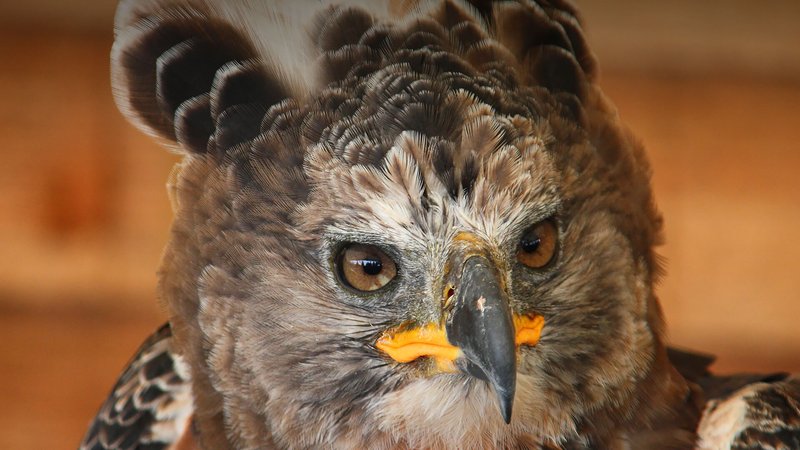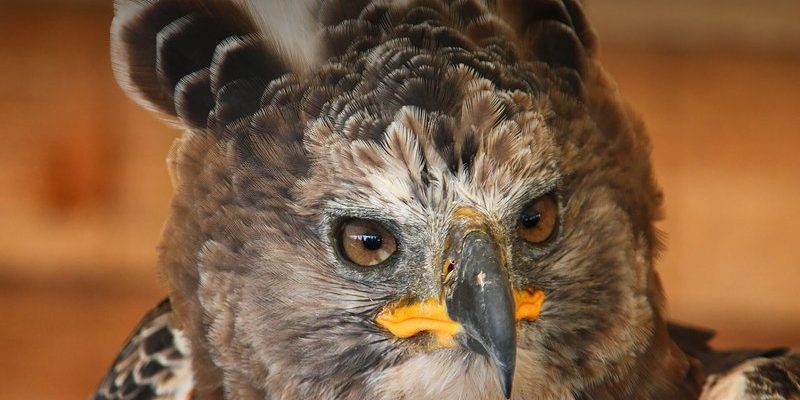
Understanding where to spot the crowned eagle is like piecing together a thrilling treasure map. Their habitats are spread across various regions, each offering a glimpse into their lives. Whether you’re a keen birdwatcher or just curious about wildlife, knowing where these eagles live can enhance your appreciation of nature. So, grab your binoculars and let’s dive into the fascinating world of crowned eagles!
What Is the Crowned Eagle?
Before we jump into where to find the crowned eagle, let’s take a moment to appreciate what makes this bird so special. The crowned eagle, or *Stephanoaetus coronatus*, is part of the Accipitridae family, which includes hawks and kites. It’s known for its impressive size and distinct appearance. Adult crowned eagles can weigh between 3 to 4.5 kg (6.6 to 9.9 lbs) and boast a wingspan of about 1.5 meters (4.9 ft), making them one of the largest eagles in Africa.
Their striking features include dark brown plumage, a white belly, and, of course, the unique crown of feathers on their head. These eagles have sharp talons and powerful beaks designed for catching and consuming prey. They mainly eat small to medium-sized animals, including monkeys and small antelope, which showcases their status as top predators in their habitats.
You might be wondering how and where these magnificent birds make their homes. Well, let’s explore that!
Natural Habitats of the Crowned Eagle
Crowned eagles are primarily found in tropical forests, savannas, and mountainous regions. Their habitats are crucial for their survival, providing cover for nesting and ample prey for feeding. In these lush environments, they can often be seen perched high in trees, scanning their surroundings for movement.
One major factor in their habitat selection is the availability of large trees. These trees serve as nesting sites, helping to protect their young from predators. Additionally, the dense foliage offers excellent camouflage while they hunt. If you’re aiming to spot a crowned eagle, keep your eyes peeled in areas with tall trees and open spaces nearby.
Here are some key habitats where crowned eagles thrive:
- Tropical rainforests
- Deciduous forests
- Savanna grasslands
- Mountainous regions
Each of these environments provides the eagle with essential resources, and knowing them can help you plan your birdwatching trips!
Regions Where Crowned Eagles Are Found
Now that we know where they prefer to live, let’s talk about specific regions around the world where crowned eagles can be spotted. Their range extends mainly across sub-Saharan Africa, making it a prime spot for bird enthusiasts.
In the western part of Africa, you can find crowned eagles in countries like Ghana and Nigeria. These areas provide the rich habitats that these birds favor. As you move towards the east, you’ll find them in countries like Uganda and Kenya, where the vast savannas and forests create an ideal playground for these magnificent hunters. Southern Africa is also home to crowned eagles, particularly in regions of Tanzania and Mozambique.
Here’s a quick rundown of notable countries where crowned eagles may reside:
- Congo
- Kenya
- Tanzania
- Ghana
- Uganda
Each of these locations offers a unique opportunity to see crowned eagles in their natural habitat, making them a must-visit for wildlife enthusiasts.
The Best Times to Spot Crowned Eagles
Timing can be everything when it comes to birdwatching. So, when is the best time to spot a crowned eagle? Generally, early morning or late afternoon are ideal, as many birds are most active during these cooler parts of the day.
During these hours, crowned eagles often hunt or display their majestic flying abilities. If you’re in a specific region, consider aligning your visit with the dry seasons. For example, in East Africa, the dry months from June to October often see an increase in wildlife activity. Less dense foliage makes it easier to spot these eagles in their trees.
Keep in mind that crowned eagles can be elusive. They tend to be solitary and are less active during the heat of the day. So make sure to plan your birdwatching adventures accordingly — patience and timing will reward you with incredible sightings.
How to Spot the Crowned Eagle
Now that you know when and where to look for crowned eagles, let’s go over some practical tips for spotting them. Watching these birds in action is an extraordinary experience, and a few helpful strategies can enhance your chances.
First, bring a pair of binoculars. A good set can help you see details from a distance. Look for perches high up in trees, as crowned eagles often rest there while keeping an eye out for prey. Try to find areas where other smaller birds are active; their alarm calls can sometimes indicate the presence of a predatory bird nearby.
Additionally, consider joining a guided birdwatching tour. Local guides often know the best spots and behaviors of crowned eagles, increasing your chances of a sighting. This can be a fun way to learn more about the birds and their environment, while also meeting fellow enthusiasts.
Here are some quick pointers to remember:
- Use binoculars for better visibility.
- Look for high perches in trees.
- Join guided tours for expert knowledge.
With these tips, you’ll be well on your way to spotting these remarkable birds!
Conservation Status of the Crowned Eagle
Crowned eagles face challenges in their natural habitats, which raises some important questions about their future. The IUCN Red List currently classifies them as Near Threatened, meaning their populations are vulnerable to issues like habitat loss and hunting.
As forests are cleared for agriculture and urban development, crowned eagles lose their homes. It’s essential to support conservation efforts aimed at protecting these habitats and promoting awareness about the need for wildlife preservation.
Many organizations are working hard to mitigate these threats, focusing on habitat restoration and sustainable land-use practices. Supporting wildlife conservation can help ensure that future generations have the same chance to see crowned eagles in the wild.
In conclusion, crowned eagles represent both the beauty and fragility of our environment. By understanding their habitats and the challenges they face, we can become better advocates for wildlife preservation. So next time you’re out exploring nature, keep an eye out for these regal birds and remember the important role they play in our ecosystem. Happy birdwatching!

